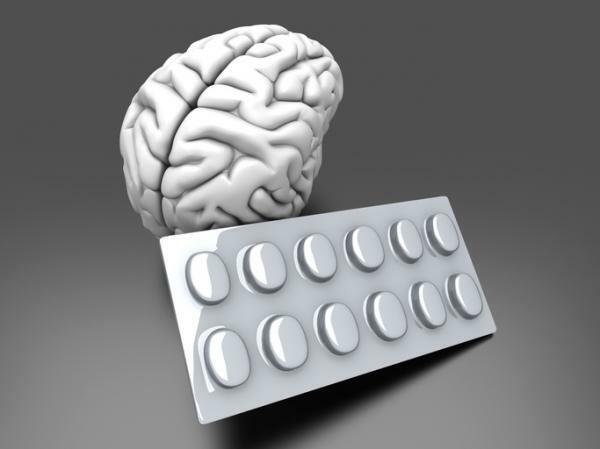
Benzodiazepines are the most easily and frequently accessed pharmacological group by the population, without the need for a related pathology that indicates their use.
How many times have we heard that someone from our environment uses Noctamid or Ortfidal to be able to sleep at night? These two drugs are part of the benzodiazepine family and, together with trankimazin, are the most widely used. However, we must know the peculiarities of benzodiazepines and when deciding to take them, We must follow the indications of a doctor, since they can generate rapid dependence and tolerance.
If you want to know this pharmacological group so present in our lives, know why it should be used and what its indications should be, keep reading this article from Psychology-Online: benzodiazepines: what they are, mechanism of action and classification.
Index
- Benzodiazepines: what are they?
- Benzodiazepines: mechanism of action
- Benzodiazepines: classification
- Short-lived benzodiazepines
- Mid-life benzodiazepines
- Long-lived benzodiazepines
- Benzodiazepines and alcohol
Benzodiazepines: what are they?
What are benzodiazepines? Benzodiazepines are the family of psychotropic drugs par excellence against anxiety treatment. Although there are also types of benzodiazepines classified in the group of hypnotics, since at high doses they have a hypnotic-sedative effect. Its discovery in the early sixties was a great advance for the treatment of anxiety, because the drug of choice for anxiety disorders were barbiturates, a high-risk drug group because of the short distance between a safe dose and a dose toxic. Therefore, they quickly became the first-line drug for anxiety disorders and also used as a hypnotic drug.
This pharmacological group has the property of relaxing to those who take it and although its main action is against anxiety, its use is also applied as a muscle relaxant, hypnotic-sedative and anticonvulsant. However, although it is a pharmacological group that works very well, like all drugs, benzodiazepines have side effects and risks that the person should be aware of. Benzodiazepines are a very safe pharmacological group, however if their administration is prolonged, can cause dependency and tolerance.
Its administration tends to be orallyHowever, in the face of very high agitation or panic attacks, it might be advisable to use its intravenous administration, since it acts more quickly in the body.
Benzodiazepines: mechanism of action.
What are benzodiazepines for? How do they work? Benzodiazepines act on the GABA receptor (gamma-amino butyric acid), a neurotransmitter that has the function of creating a relaxation effect, calming and / or calming in our brain, reducing the transmission of nerve impulses between our cells.
The neurotransmitter GABA has a inhibitory effect in our body, that is, it causes cells slow down communication between them or stop transmitting information. A large part of our neurons, almost half, respond to this receptor, which causes that after the increase of its action in the brain with the drug, the GABA receptor causes a relaxing effect on our entire body, generating a depressant effect in the. For this reason, there is a reduction in high levels of anxiety and induces an increase in muscle relaxation and hypnotism.
Benzodiazepines: classification.
The classification of benzodiazepines is assigned based on two concepts: the onset of action and the elimination half-life.
Benzodiazepines: classification according to the start
The onset of action refers to the time elapsed since the drug is administered until it reaches its maximum concentration. This temporary variable will depend on the pharmaceutical form on which it is made, the route of administration, the liposolubility of the drug, that is, the capacity of the drug to cross the blood-brain barrier so that the drug can exert its action, and the time it takes for the drug to cross the blood-brain barrier barrier. The classification based on this variable distinguishes 3 types of benzodiazepines.
Types of benzodiazepines according to onset
- Quick start: the maximum concentration of the drug appears within an hour.
- Intermediate start: the maximum concentration of the drug appears between one and two hours.
- Slow start: the maximum concentration of the drug appears in two hours or more.
Benzodiazepines: Classification According to Half-life
On the other hand, the elimination half-life, that is, the time that elapses until the drug is expelled of the organism, it will depend on the metabolization of the drug, its fat solubility, the presence of active metabolites and the proportion of fat in the body. Among the temporal variability of elimination, 3 types of benzodiazepines have been established.
Types of benzodiazepines according to half-life
- Short: the period of elimination of the drug is equal to or less than six hours.
- Intermediate: the period of elimination of the drug is between six and twenty-four hours.
- Prolonged: the period of elimination of the drug is equal to or more than twenty-four hours.
Let's take a closer look at its classification and which benzodiazepines are part of each type.
Short-lived benzodiazepines.
As we have previously indicated, short half-life benzodiazepines remain in our body six hours or less. Their advantage is that they are the fastest acting group of benzodiazepines, which is why they are frequently used for specific symptoms, such as the appearance of anxiety crisis, to treat the insomnia or as momentary muscle relaxants, however they are not used for long-term anxiety treatment.
The big problem with this group is that with a short acting half-life, the effect of the drug wears off soon and therefore This, the person has the need to want to maintain the effects of this, consuming the drug again, so they tend to generate dependency problems long-term if its consumption is not regulated by a doctor. This is one of the side effects or risks of benzodiazepines. In this group we can find different types of benzodiazepines, also taking into account the onset of action.
Types of short-lived benzodiazepines
- Short half-life benzodiazepines with rapid onset of action: midazolam, brotizolam, clotiazepam, and bentazepam.
- Short half-life benzodiazepines with intermediate onset of action: triazolam and loprazolam.
- Slow-onset short half-life benzodiazepines: zolpidem and zopiclone.
Half-life benzodiazepines.
Intermediate-life benzodiazepines have an acting half-life of between six and twenty-four hours, thereby favoring the reduction of the potential for abuse, due to the fact that its effects are more prolonged in time. In this group we can find different types of benzodiazepines, also taking into account the onset of action.
Half-life types of benzodiazepines
- Rapid onset of intermediate half-life benzodiazepines: temazepam.
- Benzodiazepines with intermediate half-life with intermediate onset of action: lorazepam, flunitrazepam, lormatazepam, nitrazepam, alprazolam, bromazepam, and halazepam.
- Benzodiazepines of intermediate half-life with slow onset of action: oxazepam.
Long-lived benzodiazepines.
Long-lived benzodiazepines maintain an elimination half-life of more than twenty-four hours, therefore they are very suitable for long-term anxiety treatment. As an advantage, it should be noted that the drug remains stable in the body for a long period of time, which can lead to its greater inconvenient in the same way, that the drug accumulates in the blood, being able to reach toxic levels in blood and / or cause more effects secondary. In this group we can find different types of benzodiazepines, also taking into account the onset of action.
Long-lived types of benzodiazepines
- Benzodiazepines with long half-life with rapid onset of action: clorazepate, diazepam, flurazepam and tetrazepam.
- Long half-life benzodiazepines with intermediate onset of action: chlordiazepoxide, clobazam, clonazepam, medazepam, and quazepam.
- Benzodiazepines with a long half-life with slow onset of action: prazepam and ketazolam.
Benzodiazepines and alcohol.
Regarding the administration of benzodiazepines, it is necessary to take into account the possible dangers when interacting with other substances. One question that patients frequently ask is: Can you mix benzodiazepines and alcohol? The answer is no. Mixing benzodiazepines and alcohol is very dangerous. Alcohol inhibits liver enzymes responsible for biotransformation, that is, transforming drug substances. The consequence of this inhibition is that the concentrations of these substances increase. Therefore, if we take benzodiazepines and alcohol together, alcohol will increase the action of the drug.
On the other hand, both substances share the main effect, since they are depressants of the Central Nervous System. Therefore, the effect is enhanced.
The consequences of mixing benzodiazepines and alcohol can be drowsiness, loss of balance, decreased heart rate, shortness of breath and loss of consciousness, among other.
This article is merely informative, in Psychology-Online we do not have the power to make a diagnosis or recommend a treatment. We invite you to go to a psychologist to treat your particular case.
If you want to read more articles similar to Benzodiazepines: what they are, mechanism of action and classification, we recommend that you enter our category of Psychopharmaceuticals.
Bibliography
- Bust, U. AND. (2000). Risk factors in benzodiazepine abuse and dependence. Addictive Disorders, 2 (3), 177-182.
- Díaz-Peñaloza, M. (2018). Benzodiazepines and their effects on anxiety. Culture: Journal of the Association of Teachers of the USMP, 32.
- Gámez, M & Indart, I. (1996). Selection of benzodiazepines. Bases for its use in the hospital. Farm Hosp, 21, 117-122.
- Rosas-Gutiérrez, I., Simón-Arceo, K., & Mercado, F. (2013). Cellular and molecular mechanism of benzodiazepine addictions. Mental Health, 36 (4), 325-329.


